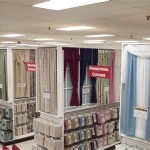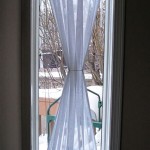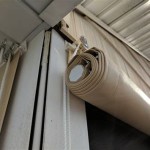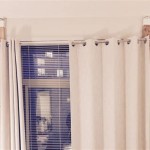Flame Retardant Curtains for Classrooms: Ensuring Safety and Compliance
Classrooms, as environments designed for learning and development, require careful consideration of safety. Fire safety is paramount, and implementing precautionary measures is essential to protect students, teachers, and staff. Flame retardant curtains represent a crucial element in a comprehensive fire safety strategy for educational spaces. These specialized curtains are designed to resist ignition and slow the spread of flames, providing valuable time for evacuation and potentially minimizing property damage in the event of a fire.
Beyond the fundamental goal of fire prevention, flame retardant curtains offer numerous benefits specific to the classroom environment. They contribute to a safer, more comfortable, and ultimately, more conducive learning atmosphere. Understanding the properties, benefits, and regulatory requirements associated with these curtains is critical for school administrators and facilities managers.
Understanding Flame Retardancy
Flame retardancy is not simply about preventing a material from burning. Instead, it refers to the ability of a material to resist ignition or self-extinguish when exposed to a flame. This characteristic is achieved through various chemical treatments applied during the manufacturing process. These treatments alter the material's composition, making it less susceptible to combustion and slowing the spread of fire.
There are two primary types of flame retardant fabrics used in curtains: inherently flame retardant (IFR) and durably flame retardant (DFR). IFR fabrics have flame retardant properties built into the fiber itself. This means the flame retardancy is permanent and will not diminish with washing or use. DFR fabrics, on the other hand, are treated with a flame retardant chemical coating. While effective, this coating can degrade over time with repeated washing or exposure to environmental factors. The choice between IFR and DFR fabrics depends on the specific needs and budget of the school.
The effectiveness of flame retardant fabrics is rigorously tested to meet established safety standards. These standards vary depending on the region and intended application, but they generally involve exposing the fabric to a controlled flame and measuring its ignitability, flame spread rate, and smoke production. Curtains that meet these standards are certified as flame retardant and can be confidently used in classrooms.
Benefits of Flame Retardant Curtains in Classrooms
The advantages of using flame retardant curtains extend beyond fire safety, impacting various aspects of the classroom environment.
Enhanced Safety: This is the primary and most important benefit. In the event of a fire, flame retardant curtains will significantly delay the spread of flames, providing crucial time for evacuation. This can be the difference between a minor incident and a major disaster. The curtains also contribute to reduced smoke production compared to untreated fabrics, improving visibility during evacuation and reducing the risk of smoke inhalation.
Compliance with Regulations: Many building codes and regulations mandate the use of flame retardant materials in public spaces, including classrooms. Using certified flame retardant curtains ensures compliance with these regulations, avoiding potential fines and legal liabilities. School administrators have a responsibility to adhere to these standards to prioritize the safety of their students and staff.
Improved Air Quality: Certain flame retardant treatments can also contribute to improved air quality. Some fabrics are treated with antimicrobial agents, inhibiting the growth of bacteria and mold, which can be particularly beneficial in spaces with high occupancy levels. Furthermore, high-quality flame retardant curtains are often designed to minimize off-gassing of volatile organic compounds (VOCs), contributing to a healthier indoor environment.
Light Control and Privacy: Like conventional curtains, flame retardant curtains offer excellent light control, allowing teachers to adjust the amount of natural light entering the classroom. This is particularly useful for presentations, screenings, and creating a more focused learning environment. Curtains also provide privacy, preventing distractions from outside and creating a sense of security for students. Flame retardant curtains can provide safety without sacrificing the functional benefits of typical classroom window coverings.
Durability and Longevity: While the initial cost of flame retardant curtains may be higher than that of untreated curtains, the long-term durability of IFR fabrics can make them a cost-effective investment. IFR fabrics retain their flame retardant properties throughout their lifespan, even with repeated washing. This reduces the need for frequent replacements, saving money in the long run. DFR fabrics can also be durable if properly maintained and cleaned according to the manufacturer's instructions.
Key Considerations When Selecting Flame Retardant Curtains
Choosing the right flame retardant curtains for classrooms requires careful consideration of several factors.
Material and Construction: Opt for high-quality fabrics that are specifically designed for flame retardancy. As previously mentioned, IFR fabrics offer permanent flame retardancy, while DFR fabrics require proper maintenance. The construction of the curtain is also important. Look for curtains with reinforced seams and durable hardware to ensure longevity and functionality. Consider the weight of the fabric, as heavier fabrics generally offer better light control and insulation.
Certification and Compliance: Ensure that the curtains are certified to meet the relevant fire safety standards in your region. Look for certifications from reputable organizations that conduct independent testing and verification. Request documentation from the manufacturer confirming the flame retardant properties of the fabric. This documentation is essential for demonstrating compliance with building codes and insurance requirements.
Maintenance and Cleaning: Understand the specific cleaning instructions for the chosen fabric. IFR fabrics can typically be washed without losing their flame retardant properties, while DFR fabrics may require specialized cleaning to preserve the chemical coating. Follow the manufacturer's recommendations to ensure the curtains remain effective and aesthetically pleasing. Regular cleaning is also essential to remove dust and debris, which can contribute to fire hazards.
Aesthetics and Design: While safety is paramount, aesthetics should not be overlooked. Choose curtains that complement the classroom decor and create a welcoming and stimulating learning environment. Flame retardant curtains are available in a wide range of colors, patterns, and styles, allowing schools to find options that meet both safety and aesthetic requirements. Consider the impact of color on the classroom environment; lighter colors can brighten the space, while darker colors can provide better light control.
Cost and Budget: Establish a budget for the curtain project and compare prices from different suppliers. While flame retardant curtains may be more expensive than untreated curtains, the long-term benefits and safety advantages make them a worthwhile investment. Consider the total cost of ownership, including installation, maintenance, and potential replacement costs. Explore options for bulk discounts or government funding programs that may be available to schools.
Professional Installation: Proper installation is crucial to ensure the curtains function correctly and safely. Hire a qualified professional to install the curtains, ensuring they are securely mounted and properly spaced from potential ignition sources. Improper installation can compromise the effectiveness of the flame retardant properties and create additional fire hazards.
Flame retardant curtains are an integral part of a comprehensive fire safety plan within a classroom environment. Selecting the appropriate curtains necessitates a thorough understanding of flame retardancy principles, adherence to relevant regulations, and careful consideration of the unique needs of the educational space. Prioritizing safety while also considering aesthetics and budget can lead to the creation of a secure and conducive learning environment for students and educators.
Further research is always encouraged when implementing safety measures. Consulting with fire safety professionals can provide valuable insights and guidance on selecting and installing flame retardant curtains that meet the specific requirements of individual classrooms and school buildings.

Curtains Making Services

Flame Retardant Curtains For Safety Twopages
Fire Retardant Curtains For Schools Educational Buildings Arcadia Textiles

Curtains And Blinds For Schools Manually Controlled Or Electrically Operated Fire Flame Retardant Antimicrobial Blackout Options Available

Fire Retardant Curtains For Schools Educational Buildings Arcadia Textiles

Fire Retardant Curtains For Schools Educational Buildings Arcadia Textiles

Flame Retardant Curtains 100 Natural Ada Ina

Fireproof Fire Retardant Bamboo Satin Shading Curtain Fabric For Classroom And Polyester Made In China Com

Flame Fire Retardant Curtains 40 Off Rrp Direct Fabrics

Fireproof Fire Retardant Bamboo Satin Shading Curtain Fabric For Classroom And Polyester Made In China Com








